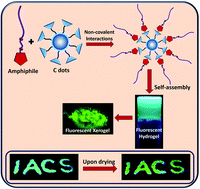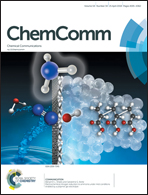Carbon nanodot-induced gelation of a histidine-based amphiphile: application as a fluorescent ink, and modulation of gel stiffness†
Abstract
This is a unique example of fluorescent carbon dot-induced hydrogelation of an amino acid-based amphiphile. The carbon dot-to-amphiphile ratio dictates the gel stiffness. Moreover, this hydrogel can be used as a prominent fluorescent ink and the dried gel shows a remarkable, unusual green fluorescence in the solid state.



 Please wait while we load your content...
Please wait while we load your content...